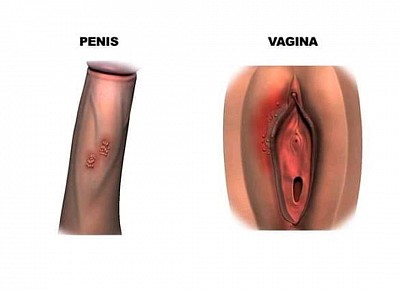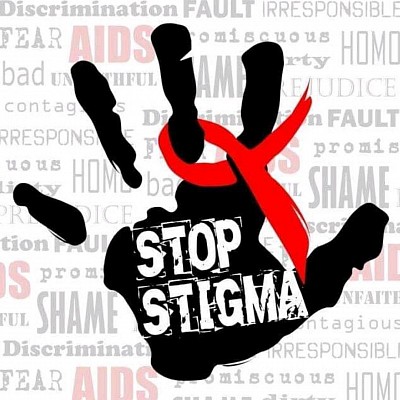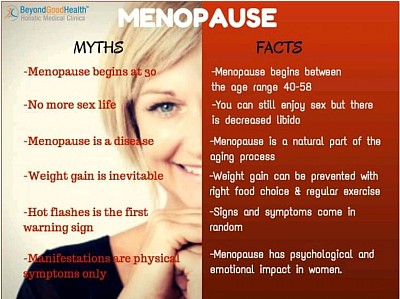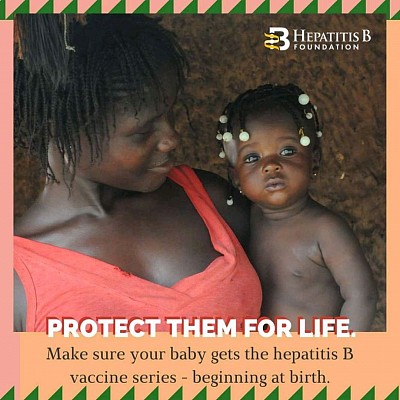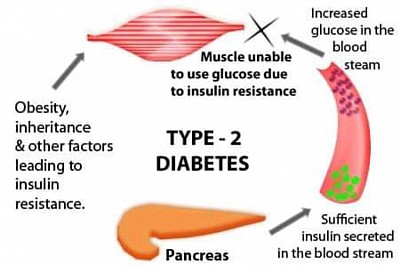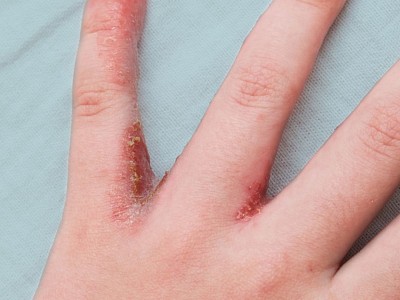More tips
GET A SPELL CAST TO WIN ANY LOTTERIES, POWER-BALL OR MEGA MILLION AND SPORT BETTING.
GET YOUR EX-HUSBAND/WIFE AND BOYFRIEND/GIRLFRIEND BACK WITHOUT DELAY.
COPD
Chronic obstructive pulmonary disease (COPD) is a group of diseases that obstruct airflow from your lungs. They do this by constricting and clogging your airways, for example, with excess mucus, as in bronchitis, or by damaging or deteriorating your air sacs, as in alveoli. This limits the amount of oxygen your lungs can deliver to your bloodstream. Two of the most prominent COPD diseases are chronic bronchitis and emphysema.
According to the Centers for Disease Control and Prevention (CDC)Trusted Source, chronic lower respiratory disease, which is primarily COPD, was the 3rd leading cause of death in the United States in 2011, and it’s on the rise.
This herbal remedy offer relief from airway restriction and impaired lung function associated with COPD.
Genital herpes
(CANCER)
There are many types of cancer. It’s not just one disease. Cancer can start in the lungs, the breast, the colon, or even in the blood. Cancers are alike in some ways, but they are different in the ways they grow and spread.Cancer cells can also spread to other parts of the body. For instance, cancer cells in the lung can travel to the bones and grow there. When cancer cells spread, it’s called metastasis (meh-TAS-tuh-sis). When lung cancer spreads to the bones, it’s still called lung cancer. To doctors, the cancer cells in the bones look just like the ones from the lung. It’s not called bone cancer unless it started in the bones.
For each type of cancer there are tests that can be done to figure out the stage of the cancer. As a rule, a lower stage (such as a stage 1 or 2) means that the cancer has not spread very much. A higher number (such as a stage 3 or 4) means it has spread more. Stage 4 is the highest stage.
PREGNANCY
Feeling pregnant? If you've been trying to conceive for awhile, this may be a monthly issue for you. You feel pregnant. You have all these signs and symptoms of pregnancy—fatigue, cravings, maybe even nausea. But then, when your period arrives, you realize that no, you're not pregnant this month.
Other scenarios could be that you're having pregnancy symptoms but your pregnancy test was negative. You may have spotting. Maybe you had pregnancy symptoms, but they’ve disappeared.
don't worry yourself after working for you with my materials and spell you will get pregnant you have nothing to be worrried about.
HIV/AIDS
(VARGINAL DRYNESS)
Vaginal dryness is the result of decreased levels of estrogen. Estrogen is the female hormone that keeps the lining of the vagina lubricated, thick, and elastic. ... Fortunately, there are several different treatments available to relieve the symptoms of vaginal dryness.
(Vaginal Dryness Symptoms )
Symptoms of vaginal dryness may include:
Soreness, itching, or burning of the vagina
Painful intercourse
Light bleeding after intercourse
Mild vaginal discharge
(What Causes Vaginal Dryness?)
A number of factors may contribute to vaginal dryness, including:
Low estrogen Vaginal dryness is most often caused by a decrease in estrogen levels. Estrogen is a hormone that helps keep the tissues of your vagina lubricated and healthy.
(HPV HUMAN PAPILLOMAVIRUS )
Human papillomavirus (HPV) is the most common sexually transmitted infection (STI).
Many people with HPV don't develop any symptoms but can still infect others through sexual contact. Symptoms may include warts on the genitals or surrounding skin.
(MENOPAUSE)
.
HEPATITIS B (HBV)
Autizim
What Is Autism?
Autism, also called autism spectrum disorder (ASD), is a complicated condition that includes problems with communication and behavior. It can involve a wide range of symptoms and skills. ASD can be a minor problem or a disability that needs full-time care in a special facility.
People with autism have trouble with communication. They have trouble understanding what other people think and feel. This makes it hard for them to express themselves, either with words or through gestures, facial expressions, and touch.
People with autism might have problems with learning. Their skills might develop unevenly. For example, they could have trouble communicating but be unusually good at art, music, math, or memory. Because of this, they might do especially well on tests of analysis or problem-solving.
More children are diagnosed with autism now than ever before. But the latest numbers could be higher because of changes in how it’s diagnosed, not because more children have a disorder.
Autism Signs and Symptoms
Symptoms of autism usually appear before a child turns 3. Some people show signs from birth.
Common symptoms of autism include:
A lack of eye contactA narrow range of interests or intense interest in certain topicsDoing something over and over, like repeating words or phrases, rocking back and forth, or flipping a leverHigh sensitivity to sounds, touches, smells, or sights that seem ordinary to other peopleNot looking at or listening to other peopleNot looking at things when another person points at themNot wanting to be held or cuddledProblems understanding or using speech, gestures, facial expressions, or tone of voiceTalking in a sing-song, flat, or robotic voiceTrouble adapting to changes in routine
Some children with autism may also have seizures. These might not start until adolescence.
Autism Spectrum Disorders
These types were once thought to be separate conditions. Now, they fall under the range of autism spectrum disorders. They include:
Asperger’s syndrome. These children don’t have a problem with language; in fact, they tend to score in the average or above-average range on intelligence tests. But they have social problems and a narrow scope of interests.Autistic disorder. This is what most people think of when they hear the word “autism.” It refers to problems with social interactions, communication, and play in children younger than 3 years.Childhood disintegrative disorder. These children have typical development for at least 2 years and then lose some or most of their communication and social skills.Pervasive developmental disorder (PDD or atypical autism). Your doctor might use this term if your child has some autistic behavior, like delays in social and communications skills, but doesn’t fit into another category.Autism Causes
Exactly why autism happens isn’t clear. It could stem from problems in parts of your brain that interpret sensory input and process language.
Autism is four times more common in boys than in girls. It can happen in people of any race, ethnicity, or social background. Family income, lifestyle, or educational level doesn’t affect a child’s risk of autism.
Autism runs in families, so certain combinations of genes may increase a child’s risk.
A child with an older parent has a higher risk of autism.
Pregnant women who are exposed to certain drugs or chemicals, like alcohol or anti-seizure medications, are more likely to have autistic children. Other risk factors include maternal metabolic conditions such as diabetes and obesity. Research has also linked autism to untreated phenylketonuria (also called PKU, a metabolic disorder caused by the absence of an enzyme) and rubella (German measles).
DIABETES
Diabetes is a metabolic disease that causes high blood sugar. The hormones, insul1n, moves sugar from the blood to be stored or used for energy.
With diabetes, your body either doesn’t make enough insul1n or can’t effectively use the insul1n it makes.
TYPE1 Diabetes: The immune system attacks and destroys cells in the pancreas.
TYPE2 Diabetes: Your body becomes resistant to insul1n and sugar builds up in your blood.
If you are experiencing any of these symptoms, you are either Pre-diabetic or Diabetic
-Increased hunger
-Increased thirst
-Weight loss
-Frequent Urination
-Erectile dysfunction
-Yeast infection
-Blurry vision
-Extreme fatigue
-Sores that don’t heal
-Decreased sex drive
-Urinary tract infection (UTI)
DIABETES
Diabetes is one of the leading causes of death in the world. As at 2016, Nigeria has the highest number of people with diabetes with 3.9 million. This figure will be doubled by 2020.
In the 90s, little was known about diabetes in Nigeria. Today, the average household have a diabetes scare.
Diabetes is the main cause of serious diseases like heart failure, cardiovascular diseases like stroke, sexual dysfunction, nephropathy, retinopathy, vascular dysfunction and different forms of cancer.
Most diabetic patients suffer from non-healing wounds, which leads to Amputation of limbs, hand and foot. Also, diabetes is the leading cause of chronic kidney disease. Nigeria has one of the worst healthcare facilities in the world and the poverty index is so low.
Ulcerative Colitis
Ulcerative colitis (UC) affects about 900,000 people in the United States. In any single year, about 20 percent of these people have moderate disease activity and 1 to 2 percent have severe disease activity, according to the Crohn’s and Colitis Foundation of America.
It’s an unpredictable disease. Symptoms tend to come and go, and sometimes they progress over time. Some patients go for years without symptoms, while others experience frequent flare-ups. Symptoms vary depending on the extent of the inflammation, as well. Because of this, it’s important for people with UC to keep track of how it affects them on an ongoing basis.
Psoriasis: Facts, Statistics, and You
Psoriasis is an immune-mediated condition that causes the body to make new skin cells in days rather than weeks.
There are several types of psoriasis, the most common of which is plaque psoriasis. It causes patches of thick red skin and silvery scales that are typically found on the elbows, knees, and scalp.
Psoriasis causes itchiness and irritation and may be painful. There’s no cure for psoriasis yet, but treatment can ease symptoms.
Read on to get the scoop on psoriasis causes, prevalence, symptoms, treatment options, and more.
Prevalence
Anyone can get psoriasis, regardless of age. But psoriasis is most likely to appear first between the ages of 15 and 35 years old. Males and females get it at about the same rate.
According to the International Federation of Psoriasis Associations (IFPA), nearly 3 percent of the world’s population has some form of psoriasis. That’s over 125 million people.
The World Health Organization noted in 2016 that the reported prevalence of psoriasis worldwide ranges between 0.09 percent and 11.43 percent, making psoriasis a serious global problem.
In the United States, it affects about 7.4 million people.
While scientists don’t know what exactly causes psoriasis, we do know that the immune system and genetics play major roles in its development.
Symptoms
Psoriasis usually causes patches of thick, red skin with silvery scales that itch or feel sore.
Psoriasis can show up anywhere — on the eyelids, ears, mouth and lips, skin folds, hands and feet, and nails. In mild cases, it may cause patches of dry, itchy skin on your scalp.
In severe cases, it can progress to cover large areas of your body and cause a variety of uncomfortable symptoms.
With psoriasis, red and rough skin takes on the appearance of silver scales. Your skin may also be dry and cracked, which can make it bleed. Your fingernails and toenails can become thick and pitted.
You may have occasional flare-ups followed by times when you don’t have symptoms.
Types of psoriasis
Plaque psoriasis is the most common type of psoriasis, and can be itchy and painful. It makes up 80 to 90 percent of cases and causes red skin lesions and silver scales that can occur anywhere on the body.
Though rare, these can even appear on the inside of your mouth or on your genitals.
Scalp psoriasis
Psoriasis can also occur on your scalp. The main symptom is a dry, itchy scalp.
It’s estimated that up to 80 percent of people with psoriasisTrusted Source will have a flare-up on their scalp. You may also notice flakes in your hair and on your shoulders. Scratching from these symptoms can cause bleeding.
Nail psoriasis
Psoriasis of the fingernails and toenails can cause your nails to appear pitted and discolored. Your nails can get weak and crumble, and they may even separate from your nail bed.
Psoriatic arthritis
Around 30 to 33 percent of people with psoriasis go on to develop psoriatic arthritis, according to the Journal of the American Academy of Dermatology.
Joint pain, stiffness, and swelling are the main symptoms of psoriatic arthritis. Symptoms can affect any part of your body, including your finger joints and spine, and can range from relatively mild to severe.
Guttate psoriasisThis type of psoriasis can be triggered by a bacterial infection. It generally affects children and young adults, and is estimated to affect about 8 percent of people with psoriasis.
Skin sores appear on the scalp, torso, arms, and legs. The scales are finer than those from other types of psoriasis. Some people with this type have only one outbreak that clears up without treatment, while others continue to have outbreaks over time.
Inverse psoriasisInverse psoriasis may cause patches of red, irritated skin in body folds, such as the armpits, under the breasts, or around the genitals and groin.
Inverse psoriasis causes smooth patches of red, inflamed skin that worsen with friction and sweating. It may be triggered by a fungal infection.
Pustular psoriasis
Pustular psoriasis is a rare type of psoriasis that can come on quickly. First, your skin becomes red and tender to the touch. Within hours, pus-filled blisters appear. These blisters may clear up and come back from time to time.
Flare-ups may be triggered by infection, irritation, or even by some medications. In addition to itching, pustular psoriasis can cause:
feverchillsdiarrheakidney and liver problemsThese issues can be severe. With one type of pustular psoriasis, Von Zumbusch, you’ll need immediate medical care as it can be life-threatening. You may need to be hospitalized to treat it.
Erythrodermic psoriasis
This rare but severe type of psoriasis can affect your whole body. It can cause severe itching and pain, and make the skin come off in sheets.
It’s estimated to affect 3 percent of people with psoriasis. Symptoms include:
red, peeling skinitchinessa burning sensationMedications, such as corticosteroids, may trigger erythrodermic psoriasis. Other triggers include:
phototherapytreatmentsunburnpsoriasis that
has spread
This form of psoriasis can be life-threatening and if you have this type of flare, you should see a doctor immediately.
Causes and risk factorsCausesThe exact cause of psoriasis isn’t known. Research suggests that psoriasis could be an autoimmune disease, though no autoantigen that could be responsible has been defined yet.
In your immune system, it’s the job of your T cells to attack foreign organisms to keep you healthy. For those with psoriasis, the T cells mistakenly attack healthy skin cells. This leads to an overproduction of new skin cells, T cells, and white blood cells.
This all allows dead skin cells to accumulate. The accumulation creates the hallmark scaly patches seen in psoriasis.
No type of psoriasis is contagious. You can’t catch psoriasis from someone who has it.
Many people with psoriasis have a family history of the disease, and researchers have found some genes linked to psoriasis.
According to the National Psoriasis Foundation, you’re 10 percent more likely to get psoriasis if one of your parents has it. Your risk is even higher — 50 percent — if both of your parents have it.
Bacterial or viral infections may also be a factor. According to the Mayo Clinic, you’re at greater risk of getting psoriasis if you have HIV. Children with frequent bouts of strep throat or other recurring infections also have a higher risk. This may be due to the way these infections affect your immune system.
Certain medications may also play a role in the development of psoriasis. The following have all been linked to psoriasis:lithiumbeta-blockerstetracyclinenonsteroidal anti-inflammatory drugs (NSAIDs)malaria drugs
Smokers have a higher risk of psoriasis. If you already have the condition, smoking may make it worse.
Areas of skin that have been injured or traumatized are occasionally the sites of psoriasis. However, not everyone who has psoriasis develops it at the site of an injury.
Obesity has also been associated with psoriasis, but the question remains: Which came first? Does psoriasis cause obesity or does obesity increase the risk of psoriasis?
There’s some evidenceTrusted Source that obesity predisposes individuals to the development of psoriasis. So it’s important to eat healthy and maintain a healthy weight to also avoid psoriasis-related health problems such as:
high blood pressurediabetescardiovasculardisease
Flare-ups may also be brought on by emotional stress or triggered by certain drugs, weather, or alcohol.
Tests and diagnosis
Despite its considerable effect on quality of life, psoriasis is underdiagnosedTrusted Source and undertreated. If you suspect you may have psoriasis, contact a board-certified dermatologist who can examine your skin, nails, and scalp for signs of the condition.
In most cases, diagnosis of psoriasis is straightforward. A doctor can typically make a determination by conducting a physical exam and reviewing your medical history.
If there’s any doubt, your doctor may do a biopsy to confirm the diagnosis. Psoriatic arthritis will need additional testing.
TreatmentThere’s currently no cure for psoriasis, but treatment can slow down the growth of skin cells and relieve pain, itching, and discomfort.
Treatments can be divided into four main types:
topicaltreatmentslight therapysystemic
medicationsbiologics
The best treatment varies by individual, taking into consideration the type of psoriasis you have, where it is on your body, and the possible side effects of medications.
For mild cases, there are a variety of over-the-counter (OTC) topical ointments that can help. There are also a number of things you can do at home that will help treat the symptoms of psoriasis.
Prescription corticosteroids can also help, but they’re often only used during flare-ups. Other topical treatments include:
calcipotriene (Dovonex) and calcitriol (Rocaltrol), synthetic (man-made) vitamin D that works by slowing the growth ofskin cellsanthralin (Dritho-Scalp), which regulates DNA
activity in skin cells and remove scalestazarotene (Tazorac), a derivative of vitamin
A that’s used to normalize DNA activity and decrease inflammationtacrolimus (Prograf) and pimecrolimus (Elidel), that work by reducing inflammationsalicylic acid, which is used to get rid of
dead skin cellscoal tar, which works by reducing inflammation
and scalingmoisturizers, used to soothe dry skin
Light therapy and natural sunlight can also ease psoriasis symptoms. This is because light can slow skin cell growth and scaling. Phototherapy can be combined with other topical or systemic agents to enhance efficacy.
Systemic treatments impact the entire immune system. These drug options are available in oral and injectable drugs. These include:
retinoidsmethotrexatecyclosporineBiologic drugs, or biologics, are drugs that target specific parts of the immune system. Typically they are prescribed for moderate to severe psoriasis and psoriatic arthritis that hasn’t responded to other treatments. Biologics at this time are given by injection or intravenous (IV) infusion.
Complications
Having psoriasis increases your risk of psoriatic arthritis. Approximately 30 to 33 percent of people with psoriasis will develop psoriatic arthritis.




